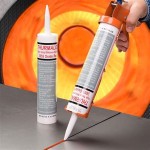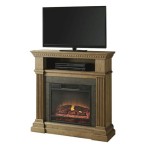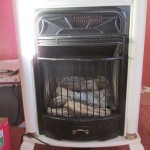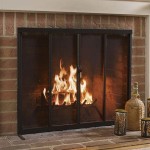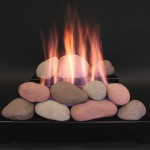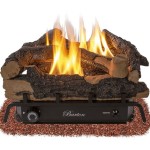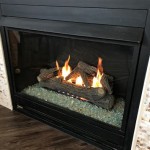Inserts For Fireplaces With Heatilators: Enhancing Efficiency and Comfort
Fireplaces, traditionally a source of warmth and ambiance, can sometimes suffer from inefficiency, allowing significant heat loss through the chimney. This issue is particularly relevant for fireplaces equipped with a heatilator system, an older technology designed to improve heat circulation. While heatilators offered an initial improvement over traditional open fireplaces, modern fireplace inserts provide a more advanced and effective solution for optimizing heating performance. This article will explore the concept of fireplace inserts in the context of existing fireplaces with heatilators, detailing their benefits, selection considerations, installation nuances, and operational aspects.
Understanding Heatilator Systems and Their Limitations
A heatilator is a metal firebox surrounded by an outer metal shell. Air is drawn in through vents at the bottom of the unit, heated as it passes around the firebox, and then circulated back into the room through vents at the top. This system aims to distribute heat more effectively than a simple open fireplace, which primarily radiates heat directly in front of it, leaving other areas of the room relatively cold. However, heatilators have limitations. They often rely on convection, which can be inefficient in larger rooms. The metal ductwork can also lose heat as it travels through the walls, and the system can still draw significant amounts of warm air up the chimney when not in use, effectively creating a draft. Furthermore, older heatilator systems may not meet current efficiency standards, contributing to higher heating costs and environmental impact.
The primary problem with heatilator systems is their inherent design. The air drawn in to be heated is often cold air from outside the house. While the system does circulate this air, the process of heating the cold air inherently draws heat energy from the fire, decreasing the overall temperature of the burning wood. This results in a cooler fire and lower overall heat output compared to a sealed system.
Another drawback is the maintenance requirements. Heatilators can accumulate dust and debris within the ductwork, reducing airflow and potentially posing a fire hazard. Cleaning these systems can be challenging and may require professional assistance. The metal components themselves can also corrode over time, further reducing their efficiency and lifespan.
Benefits of Fireplace Inserts in Heatilator Fireplaces
A fireplace insert is a self-contained heating appliance designed to fit within an existing fireplace opening. Inserts offer a superior solution for improving heating efficiency and reducing heat loss compared to relying solely on a heatilator system. They provide a significantly improved method of heating a home, offering many advancements over the older heatilator method.
One of the primary benefits is enhanced heating efficiency. Modern fireplace inserts are designed with sealed combustion chambers and efficient heat exchangers, maximizing the amount of heat extracted from the fuel source, whether it's wood, gas, or pellets. This means more heat is directed into the room, and less is lost up the chimney. Unlike heatilators, modern inserts are designed to be more air-tight, preventing drafts and retaining heat within the home. This leads to a more consistent and comfortable temperature, and lower heating bills.
Fuel versatility is another advantage. Inserts are available in wood-burning, gas-burning, and pellet-burning models, allowing homeowners to choose the fuel type that best suits their needs and preferences. Gas and pellet inserts offer the convenience of automatic ignition and thermostat control, while wood-burning inserts provide the traditional ambiance of a wood fire with improved efficiency.
Improved safety is also a key consideration. Modern inserts are designed with safety features such as sealed combustion chambers and safety shut-off valves (for gas models), reducing the risk of carbon monoxide poisoning and chimney fires. They also typically feature glass doors that prevent sparks and embers from escaping into the room.
Finally, fireplace inserts can significantly improve the aesthetic appeal of a fireplace. They are available in a wide variety of styles and finishes, allowing homeowners to customize the look of their fireplace to match their home décor. Many models feature realistic flame patterns and decorative logs or stones, creating a visually appealing focal point.
Selecting the Right Fireplace Insert for a Heatilator Fireplace
Choosing the right fireplace insert for a fireplace with a heatilator requires careful consideration of several factors, including fireplace dimensions, heating needs, fuel preferences, and installation requirements. The first step is to accurately measure the fireplace opening to ensure the insert will fit properly. It's important to consider the width, height, and depth of the firebox, as well as any obstructions or irregularities that may impact the installation process. It is highly recommended that a professional installation company perform these measurements, as they will have the right tools and experience to ensure accuracy.
Next, assess the heating requirements of the space. Consider the square footage of the area to be heated, the insulation levels of the home, and the climate in which the home is located. This will help determine the appropriate BTU (British Thermal Unit) output for the insert. Over-sizing an insert can lead to overheating, while under-sizing it can result in inadequate heating. Fuel type is the next consideration. Wood-burning inserts offer a traditional aesthetic and can be a cost-effective option if wood is readily available. Gas inserts provide convenience and ease of use, while pellet inserts offer a balance of efficiency and convenience.
Installation requirements should also be considered. Some inserts may require modifications to the existing fireplace opening, such as removing the heatilator components or installing a new chimney liner. It's essential to consult with a qualified installer to determine the specific requirements for the chosen insert and to ensure that the installation is performed safely and correctly. Furthermore, local building codes and regulations may dictate specific requirements for fireplace insert installations. It's important to obtain the necessary permits and approvals before beginning the installation process.
When selecting an insert for a fireplace with a heatilator, the condition of the heatilator system itself needs to be evaluated. If the existing ductwork is damaged, corroded, or otherwise compromised, its removal may be necessary to facilitate the installation of the insert. In some cases, the ductwork can be sealed off and left in place, but this should only be done with the approval of a qualified installer. It is important to remember that even if the existing heatilator ductwork is not being used, the fireplace insert will still need a properly sized and installed chimney liner.
Finally, consider the various features and options available for fireplace inserts. These may include thermostat control, remote control, blowers, decorative fronts, and different types of log sets or media. Choosing the right features can enhance the convenience and enjoyment of the fireplace.
Installation and Operation of Fireplace Inserts
Installing a fireplace insert in a fireplace with a heatilator typically involves several steps, including removing or disabling the heatilator system, preparing the fireplace opening, installing a chimney liner, and connecting the insert to the gas or electrical supply (if applicable). The first step is typically to disconnect the heatilator fan and ductwork. In some cases, the entire heatilator unit may need to be removed to create sufficient space for the insert. This process can be labor-intensive and may require specialized tools. If the heatilator is to be removed, it’s important to ensure that all gas lines (if applicable) are properly capped off by a qualified technician.
Next, the fireplace opening needs to be cleaned and prepared. This may involve removing any loose bricks or mortar, patching any cracks or holes, and ensuring that the firebox is level and structurally sound. A critical step in the installation process is installing a chimney liner. This is a flexible metal pipe that runs from the insert's flue collar up the chimney to the top. The chimney liner protects the existing chimney from corrosion and ensures that combustion gases are safely vented to the outside. The chimney liner must be properly sized to match the insert's flue outlet and must be installed in accordance with the manufacturer's instructions and local building codes.
Once the chimney liner is in place, the insert can be carefully positioned into the fireplace opening. The insert should be securely fastened to the firebox using brackets or screws, ensuring that it is level and flush with the surrounding wall. If the insert is a gas or pellet model, it will need to be connected to a gas line or electrical outlet. This should be done by a qualified technician in accordance with local codes and regulations. After the insert is installed, it's important to test the system to ensure that it is functioning properly. This includes checking for gas leaks (if applicable), verifying that the blower is working, and monitoring the temperature output to ensure that the insert is heating the room effectively. This testing should be done by the installer, who can make any necessary adjustments to ensure optimal performance.
Operating a fireplace insert is generally straightforward, but it's important to follow the manufacturer's instructions carefully. For wood-burning inserts, this includes selecting the appropriate type of wood, building a proper fire, and maintaining adequate airflow. For gas and pellet inserts, this involves setting the thermostat and allowing the unit to automatically regulate the temperature. Regular maintenance is essential for ensuring the long-term performance and safety of the fireplace insert. This includes cleaning the glass door, removing ash or pellets, and inspecting the chimney liner for any signs of damage or corrosion. It's also important to schedule a professional chimney inspection and cleaning at least once a year to prevent chimney fires and carbon monoxide poisoning.
Proper ventilation is crucial for the safe operation of any fireplace insert. Ensure that the room is adequately ventilated to prevent the buildup of carbon monoxide. Install carbon monoxide detectors throughout the home and test them regularly. Never operate a fireplace insert if the chimney is blocked or if there are any signs of damage to the chimney liner.

Heatilator Wood Burning Insert Atmosphere

Update Your Heatilator Mark 123 Fireplace In No Time

Heatilator Wood Burning Insert Atmosphere

Heatilator Accelerator 36 Traditional Heat Circulating Wood Burning F Us Fireplace

Heatilator Heirloom Gas Fireplace Fireside Hearth Home

Heatilator Birmingham 50

Heatilator Fireplaces Canadian Home Inspection Services

Update Your Heatilator Mark 123 Fireplace In No Time

Heatilator Icon 80 Herringbone Refractory Bricks 33676 33677 33687 33696

Heatilator Element 36 Inch Wood Burning Fireplace


